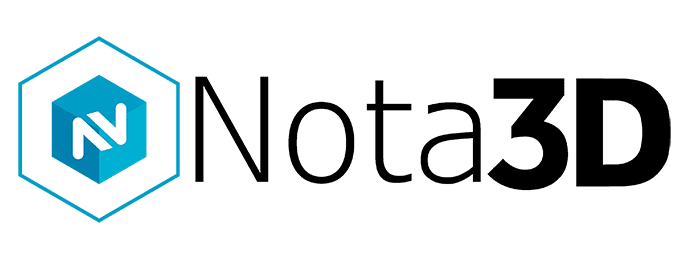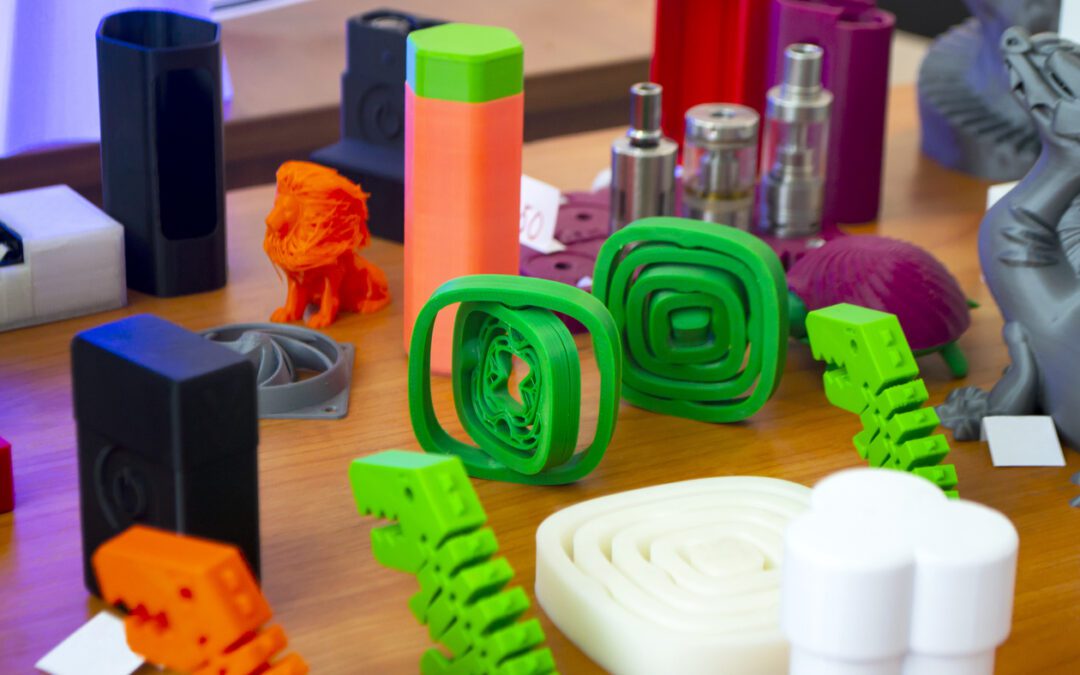Exploring the Versatility of Plastic Additive Manufacturing
3D printing has emerged as a transformative technology in modern manufacturing and prototyping, revolutionizing traditional production methods. Among the many materials utilized in this innovative technology, plastics stand out for their versatility, affordability, and adaptability to various applications across different industries.
The versatility of plastics in 3D printing is unparalleled. With a wide range of plastic materials available, including ABS, PLA, PETG, and more, each with unique properties and characteristics, 3D printing can cater to many requirements. Plastics can be engineered to possess varying degrees of flexibility, strength, durability, heat resistance, and even transparency, making them suitable for an extensive array of applications. From creating intricate components for the aerospace industry to personalized prosthetic limbs in healthcare, the adaptability of plastics in 3D printing knows no bounds. Let’s delve into the groundbreaking and creative applications of plastic 3D printing that reshape various sectors.
Healthcare Industry
- Customized Prosthetics and Orthotics: 3D printing allows for creation of custom-fitted prosthetic limbs and orthotic devices tailored to individual patient needs. This customization enhances comfort, functionality, and overall quality of life for amputees and individuals with mobility challenges.
- Patient-Specific Surgical Planning: Surgeons utilize 3D-printed patient anatomy models for detailed pre-surgical planning. These models accurately represent the patient’s unique anatomy, aiding in surgical strategy development and enhancing surgical precision.
- Complex Surgical Tooling: Surgeons can design and 3D print specialized surgical tools and guides for complex surgical procedures. These tools, customized to the patient’s anatomy, improve surgical accuracy and reduce operation time.
- Anatomical Teaching Models: 3D printing enables the creation of detailed anatomical models for medical education and training. These models mimic real human organs and structures, offering a hands-on learning experience for medical students and professionals.
- Biofabrication and Tissue Engineering: Researchers are exploring 3D printing for biofabrication, creating three-dimensional structures using biocompatible plastic materials that mimic human tissues and organs. This technology holds promise for tissue engineering and regenerative medicine.
- Dental Applications: In dentistry, 3D printing creates dental implants, crowns, bridges, and models for orthodontic treatments. This technology streamlines the dental manufacturing process and improves the accuracy and fit of dental prosthetics.
- Drug Delivery Devices: 3D printing fabricates personalized drug delivery devices such as capsules or implants with precise drug dosages. This allows for tailored treatments based on individual patient needs.
- Surgical Training and Simulation: Plastic 3D printing produces realistic surgical simulators for training surgeons. Trainees can practice surgical procedures on these models, gaining valuable hands-on experience in a risk-free environment.
- Assistive Devices: 3D printing is utilized to create assistive devices such as mobility aids, customized ergonomic tools, and adaptive equipment, enhancing the daily lives of patients with disabilities.
- Research and Prototyping: Researchers use 3D printing to quickly prototype and iterate medical devices, experimental models, and research tools, expediting the development of new healthcare technologies.
Automotive Industry
- Prototyping and Concept Modeling: 3D printing allows for rapid prototyping of automotive components and parts, enabling designers to iterate and refine their designs quickly. This significantly speeds up the product development cycle and aids in concept validation.
- Customized Components: Plastic 3D printing enables the production of customized automotive components tailored to specific design requirements or individual preferences. This personalization can extend to interior design elements, dashboard features, and more.
- Lightweighting for Fuel Efficiency: Lightweighting is crucial for improving vehicle fuel efficiency. 3D printing enables the creation of lightweight yet strong plastic components, reducing the vehicle’s overall weight and contributing to better fuel economy.
- Complex Air Intakes and Ducts: 3D printing allows for the fabrication of complex air intake systems and ducts with intricate geometries. These optimized designs improve airflow, leading to enhanced engine performance and efficiency.
- Interior Components and Trim: Plastic 3D printing is used to manufacture interior components such as dashboard elements, knobs, handles, and trim pieces. This process offers flexibility in design, colors, and textures, enhancing the vehicle’s overall aesthetic appeal.
- Custom Grilles and Emblems: Car enthusiasts and manufacturers can create custom grilles, emblems, and logos using 3D printing. This customization adds a unique touch to vehicles and allows for branding differentiation.
- Jigs, Fixtures, and Tooling: 3D printing is utilized to produce jigs, fixtures, and tooling used in automotive assembly lines. These custom tools improve the efficiency and accuracy of assembly processes, reducing production time and costs.
- Ergonomic Enhancements: 3D printing helps in creating ergonomic enhancements for the vehicle interior, including custom-designed grips, handles, and controls that provide an improved and comfortable user experience.
- Low-Volume Production Runs: Plastic 3D printing enables low-volume production of specific automotive parts, allowing for on-demand manufacturing and reducing the need for large inventory storage.
- Hybrid and Electric Vehicle Components: 3D printing supports the production of specialized components for hybrid and electric vehicles, aiding in creating efficient battery housings, charging ports, and other electric drivetrain parts.
Aerospace Industry
- Prototyping and Rapid Iteration: 3D printing allows for rapid prototyping of aerospace components, enabling engineers to iterate and refine designs quickly. This accelerates the product development cycle and helps in achieving optimal designs.
- Lightweight Structural Components: Plastic 3D printing produces lightweight yet strong structural components. Lightweight materials are crucial in aerospace for reducing fuel consumption and enhancing overall efficiency.
- Complex Geometries for Optimization: 3D printing creates complex geometries that are otherwise challenging or impossible to achieve with traditional manufacturing methods. These intricate designs can optimize airflow, reduce drag, and enhance aerodynamic performance in aircraft and spacecraft.
- Customized Interiors and Cabin Components: Plastic 3D printing facilitates the production of customized interior components, such as panels, vents, brackets, and entertainment system fittings. This customization caters to the specific needs and preferences of different aerospace customers.
- Ducting and Ventilation Systems: 3D printing is used to manufacture precise ducting and ventilation components, ensuring efficient airflow and cooling systems within aircraft and spacecraft.
- Satellite and Small Payload Components: Plastic 3D printing creates components for small satellites and payloads, offering a cost-effective and efficient way to manufacture intricate and lightweight parts.
- Tooling and Molds: 3D printing creates custom tooling and molds for aerospace manufacturing processes. These tools aid in the production of composite materials and complex shapes.
- Aerospace Research Models: Plastic 3D printing fabricates detailed models for aerospace research and testing. These models assist in aerodynamic studies, wind tunnel testing, and other research activities.
- Prototypes for Engine Components: Engine components like turbine blades can be prototyped using 3D printing to assess designs and conduct performance testing. This aids in refining designs for optimal engine efficiency and durability.
- Cabin Fixtures and Amenities: 3D printing is utilized to create various cabin fixtures, amenities, and in-flight service items, offering a lightweight and customized approach to interior design.
Consumer Goods and Electronics
- Customized Phone Cases and Accessories: 3D printing allows for the creation of customized phone cases and accessories, enabling consumers to design and personalize their gadgets with unique patterns, textures, and designs.
- Earphones and Wearables: Plastic 3D printing is utilized to create customized earphone shells and wearables that fit an individual’s anatomy perfectly, enhancing comfort and performance.
- Ergonomic Computer Peripherals: 3D printing is used to design and manufacture ergonomic computer peripherals such as keyboards, mice, and mousepads tailored to users’ specific hand sizes and preferences.
- Virtual Reality (VR) and Augmented Reality (AR) Devices: 3D printing enables the creation of lightweight and comfortable VR/AR headsets and accessories. Customized designs enhance user experience and device compatibility.
- Gaming Accessories: 3D printing is employed to fabricate unique and customized gaming accessories like controller grips, joystick caps, and stands, offering a personalized gaming experience.
- Customized Home Decor: Consumers can personalize home decor items, such as lampshades, vases, and wall art, using 3D printing, allowing for unique and bespoke designs that match individual tastes and interior aesthetics.
- Headphones and Speaker Enclosures: Plastic 3D printing enables the production of high-quality headphone and speaker enclosures, optimizing acoustic properties for improved sound quality and customized designs.
- Portable Chargers and Power Banks: 3D printing is utilized to create innovative and compact designs for portable chargers and power banks, enhancing portability and usability.
- Wearable Health and Fitness Trackers: Plastic 3D printing allows for the creation of customized wearable health and fitness trackers, optimizing the design for comfort and accuracy in tracking biometric data.
- Educational Electronics Kits: 3D printing is employed to manufacture educational electronics kits, promoting STEM (Science, Technology, Engineering, and Mathematics) learning by providing hands-on experience with assembling and understanding electronic components.
Education
- Educational Models: 3D printing allows the creation of accurate and intricate models of various educational subjects, such as molecules in chemistry, human anatomy, geological formations, historical artifacts, and architectural structures. These models provide a hands-on learning experience, enhancing understanding and retention.
- Prototyping for Student Projects: Students can utilize 3D printing to prototype their projects, giving them a tangible representation of their ideas. This hands-on approach facilitates better understanding of concepts and encourages creativity and innovation.
- Customized Learning Aids: Educators can design and 3D print specialized learning aids tailored to the needs of individual students. These aids can include Braille materials, tactile graphics, or objects that aid in specific learning styles.
- Mathematical and Geometrical Concepts: 3D printing helps in visualizing complex mathematical and geometrical concepts by creating three-dimensional models of geometric shapes, graphs, fractals, and other abstract mathematical concepts, making learning more interactive and engaging.
- Historical and Cultural Artifacts: Students can learn about history and culture by examining 3D-printed replicas of historical artifacts, ancient coins, sculptures, and archaeological discoveries, providing a tactile connection to the past.
- Astronomy and Space Exploration: 3D printing aids in creating scaled models of celestial bodies, planetary systems, and space exploration equipment, facilitating a deeper understanding of astronomy and space science.
- Robotics and Engineering Education: 3D printing is used to fabricate components for robotics projects and engineering models, allowing students to design, build, and test robots and other engineering prototypes.
- Art and Design Projects: Students in art and design programs utilize 3D printing to create sculptures, intricate art pieces, jewelry, and other creative projects, offering a unique medium for artistic expression.
- Interactive Puzzles and Games: 3D printing enables the creation of educational puzzles, board games, and interactive learning tools that enhance critical thinking, problem-solving, and collaboration skills.
- Miniature Architecture and Urban Planning: Students can design and print miniature models of buildings, cities, or urban planning projects, promoting understanding of architecture and urban development concepts.
The affordability of plastic materials makes 3D printing a cost-effective choice for both small-scale projects and large-scale production. The ability to optimize material usage during the printing process minimizes waste, contributing to cost-efficiency. This cost-effectiveness is particularly advantageous for startups, research institutions, and businesses looking to innovate without breaking the bank.
In essence, the marriage of 3D printing with plastics has redefined the way we approach product development, prototyping, and manufacturing. It has not only opened new doors for creativity and design but has also democratized access to manufacturing capabilities, empowering individuals and industries alike to bring their ideas to life in a way that was once considered futuristic. The journey of 3D printing with plastics continues to evolve, promising a future where innovation and production seamlessly merge, propelling industries towards unparalleled heights of efficiency and creativity.
Nota3D is the most responsive in the industry—solving issues, developing solutions, and delivering materials faster than anyone else on the market. We work tirelessly to bring you what you need when you need it. Our favorite thing is to learn about you and your specific goals when it comes to 3D technology. We have various solutions and will help you find the right fit, even if it isn’t from us. Contact us today.

